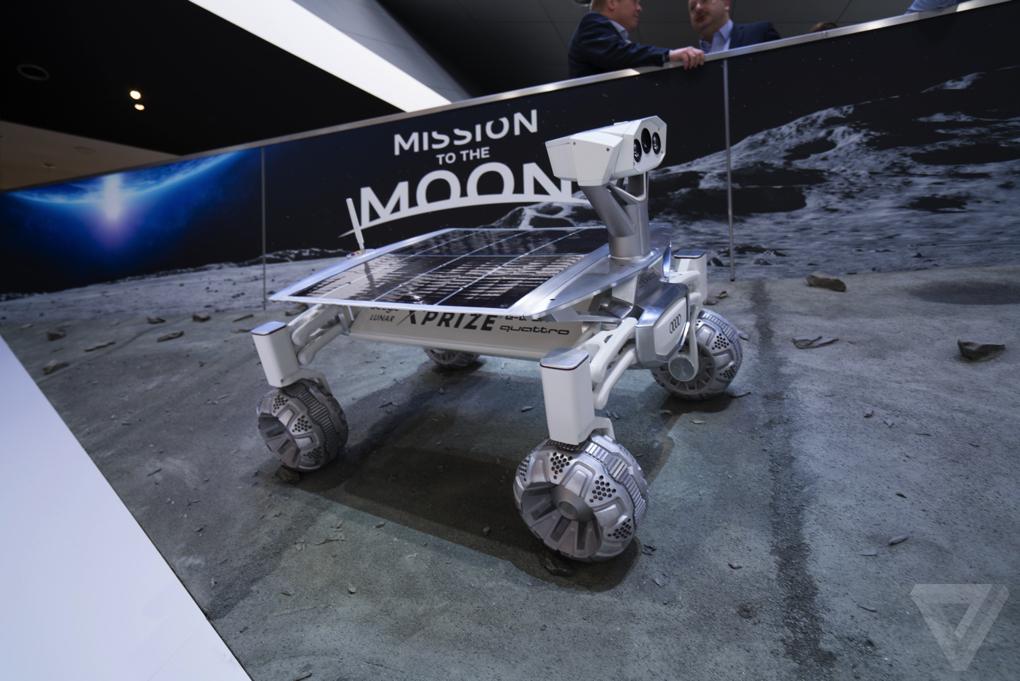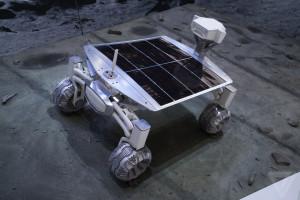 It’s been over 40 years since humans have been to the moon, but the idea of going back has been increasingly popular lately. It’s essentially a new space race: out of the many international space agencies and private companies talking about returning to the moon, who will actually be the first? One thing seems likely – when we do return to the moon, 3D printing will almost certainly be involved. The technology has been part of just about every discussion of the next moon landing, with ideas ranging from actual 3D printed moon bases to 3D printed spacecraft that will help us get there.
It’s been over 40 years since humans have been to the moon, but the idea of going back has been increasingly popular lately. It’s essentially a new space race: out of the many international space agencies and private companies talking about returning to the moon, who will actually be the first? One thing seems likely – when we do return to the moon, 3D printing will almost certainly be involved. The technology has been part of just about every discussion of the next moon landing, with ideas ranging from actual 3D printed moon bases to 3D printed spacecraft that will help us get there.
With the motivation provided by the Google Lunar XPRIZE, it seems probable that the next moon landing will be sponsored by a private company rather than a governmental space agency. The XPRIZE competition, which was introduced all the way back in 2007, will award $20 million to the first company to land a privately funded rover on the moon, travel 500 meters, and transmit high definition images and video back to Earth. Companies have until the end of this year to announce their verified launch contracts, and missions must be completed by the end of 2017. Several of the companies who have entered the competition are incorporating 3D printing into their plans, but perhaps none are using the technology more than German team Part Time Scientists.
The team is being sponsored by Audi, which has invested a lot in 3D printing technology. At the North American International Auto Show, which opened today in Detroit, Audi is debuting a prototype of the Audi Lunar Quattro, the rover that Part Time Scientists will send to the moon. The Lunar Quattro is small, sturdy and almost entirely 3D printed from aluminum and titanium. The team’s goal is not just to travel the 500 meters required by the contest, but to travel 2.3 kilometers from their planned landing site to the Lunar Roving Vehicle (LRV) that the Apollo 17 mission left behind in 1972.
 Visiting the LRV, says Part Time Scientists CEO Robert Böhme, is their team’s main goal, although winning the XPRIZE would be a welcome bonus. No one has seen the LRV since it was left behind, and Part Time Scientists wants to see how well it has held up over decades of harsh moon conditions. What they learn could provide valuable information on how best to design and manufacture future lunar equipment.
Visiting the LRV, says Part Time Scientists CEO Robert Böhme, is their team’s main goal, although winning the XPRIZE would be a welcome bonus. No one has seen the LRV since it was left behind, and Part Time Scientists wants to see how well it has held up over decades of harsh moon conditions. What they learn could provide valuable information on how best to design and manufacture future lunar equipment.
“You can get a great deal of knowledge from materials science to learn what works and what doesn’t,” says Böhme. “Long-term exposure, what materials can you use?”
Hopefully, some of those materials are already on the moon. Part Time Scientists wants to build a 3D printer that can print objects using lunar soil, which is rich in aluminum, titanium and magnesium. Constructing parts using materials native to the moon will not only make them more durable to lunar conditions, but will save time by allowing the parts to be built onsite rather than shipped from Earth.
They’re not the first company to consider this idea; we’ve already seen a 3D printer launched into space and docked at the International Space Station to experiment with printing parts in space and ultimately on Mars. It makes sense; what other manufacturing method is portable and efficient enough to bring to another planet? Böhme thinks that 3D printing could go a long way towards enabling astronauts to “live off the land” of the moon.
“If you bring the right technology back to the Moon, you can pave the way for more exploration,” he said. “And not just exploration, but also to find a commercial benefit for future missions. It’s really hard to justify a lunar mission now, even if you get it down to $30 million.”
The ultimate goal of the XPRIZE competition is to justify repeated missions to the moon. A lot of potential research opportunities are there, and the resources on the lunar surface could be incredibly valuable to humanity. Regardless of which team makes it there first, the results of this 10-year competition are going to be big news for science and, potentially, manufacturing. Discuss this story in the Audi Moon 3D Printing forum on 3DPB.com.
[Images: The Verge]Subscribe to Our Email Newsletter
Stay up-to-date on all the latest news from the 3D printing industry and receive information and offers from third party vendors.
You May Also Like
3D Printing Unpeeled: $5000 Cold Spray 3D Printer, Roland DGA & Living Materials
The AeroForge is a $5000 cold spray metal printer for copper made by a student team at Rice University. In a paper for ACS Central Science a team from Nanjing...
3D Printing News Briefs, April 27, 2024: Research, Digital Dentistry, Cycling, & More
We’re starting today’s 3D Printing News Briefs with some research into 3D printed luminescent quantum-dot polymer architectures and free-form laser beam shaping, and then on to an open source 4-axis...
Will Photonic-Crystal Lasers Revolutionize 3D Printing?
Powder bed fusion (PBF) for metals and polymers predominantly utilizes lasers as the primary heat source. Some directed energy deposition (DED) technologies also employ lasers, while various vat polymerization methods...
3D Printing Unpeeled: Orbex Investment, IndoMIM and HP, Ultrasonic Waves
INDO-MIM has bought three HP Metal Jet S100 printers, operating two in India and one in Texas. This is a win for HP because the company has deep experience in...

































